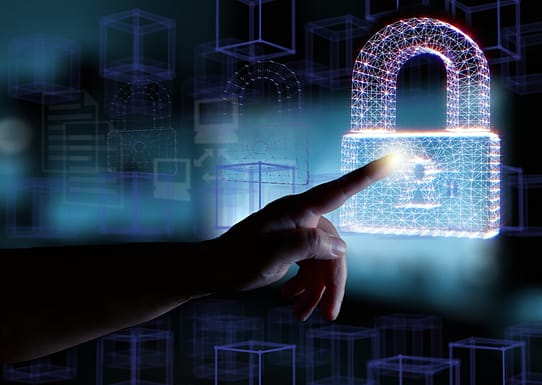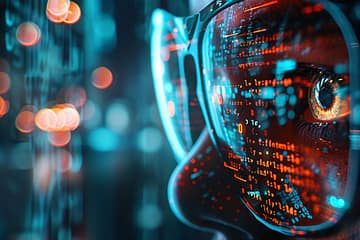India’s Content Gold Rush Needs Protection: The Critical Role of Anti-Piracy Software Explained
The content landscape in India is like a beautiful kaleidoscope. We’re making and consuming tales like never before. Bollywood is a billion-dollar industry, and the hyper-regional film industries are growing at an incredible rate. OTT platforms, indie music, and digital learning tools are all growing quickly. It has a lot of influence in both culture and the economy. But piracy is a constant, corrosive menace that lies behind this lively surface. The leak is taking away the things that make creativity and business work.
An anti piracy software is the quiet, smart defence that comes in. It’s not just about stopping downloads; it’s about protecting the future of a whole industry. Let’s look at how this important technology is doing its part to make sure that artists receive what they deserve and that viewers have real experiences.
The Indian Content Boom: A Feast Under Attack
The enormous increase is impossible to dismiss. Cheap bandwidth, cellphones everywhere, and a love of storytelling that goes back a long way have all led to a huge increase in content consumption. Regional films find viewers all over the world, niche web series get millions of fans, educational platforms reach distant communities, and music streams by the billions.
This surge creates employment, shows off talent, and connects people from other cultures. It’s a great time. But this kind of abundance draws in predators. Pirates love Indian material because it is so big and valuable. They act like digital parasites, taking views, subscriptions, and money nearly as quickly as real platforms can expand. The industry is weak because it is so successful.

Piracy’s Poisonous Bite: It’s Not Just About Lost Money
Piracy does a lot of harm on many levels. Sure, studios, platforms, bands, and individual artists lose a lot of money right away—billions of dollars disappear every year. But the damage goes deeper. It makes creative work less valuable, which makes it difficult for artists to keep their jobs and take innovative risks. It makes people less likely to invest in fresh, diversified material, particularly in experimental or regional areas.
Piracy sites are typically full with viruses, which may seriously harm users’ gadgets and personal information. They hurt real platforms that put a lot of money into quality, security, and user experience. In the end, it’s a danger to the whole ecosystem, and it might slow down the development of one of India’s most vibrant industries.
What Anti-Piracy Software Really Does: The Digital Locksmith
Think of anti-piracy software as a security team that is always on the lookout for threats in the digital world. Its weapons are advanced and come in many forms. It constantly searches the huge amount of information on the internet, including websites, peer-to-peer networks, social media, and even illegal streaming devices and applications, looking for copies of protected material that aren’t allowed.
An anti piracy software can find the material by its digital fingerprints and watermarks, even if the content has been changed or given a new name. It doesn’t just ignore whatever material it finds; it sends legally enforceable letters to search engines, hosting firms, and app stores to speed up the removal of the infringing content. This proactive identification and quick eradication are important for stopping pirate activities.
Proactive Defence Mechanisms: More Than Takedowns
Modern anti-piracy tools do a lot more than merely take down sites that are stealing. They use proactive techniques to make piracy tougher and less appealing from the start. Advanced web crawlers keep an eye on new dangers and keep track of pirate networks all the time. Real-time monitoring of live streams, particularly for big athletic events or premieres, may quickly find and stop unauthorised transmissions. Some technologies may even include countermeasures right in the pirate broadcasts, making it hard to watch them. The goal is to make things harder for pirates by making their operations more complicated, expensive, and unreliable. This will safeguard material when it is most susceptible.
India’s Unique Battlefield: Problems for Anti-Piracy Technology
India has its own set of problems when it comes to fighting piracy. The market is huge and varied; people may access material on anything from simple feature phones to high-end smartphones, and the internet speeds might be considerably different. There is a huge amount of information produced every day. Deeply rooted behaviours among consumers, where free access has often been the norm, need both education and enforcement.
The legal structure is becoming stronger, but it might still take a long time to enforce, which lets pirate sites come back swiftly. To be able to handle this complicated situation, anti-piracy systems need to be very flexible, scalable, and affordable. In addition, this also means that they need to be constantly updated. Furthermore, without frequent updates, such systems can quickly become ineffective.
The Changing Arms Race: Building a Strong Future
There is always a technical arms race to stop piracy. Pirates are always coming up with new ways to steal, such employing encrypted channels, decentralised networks, or complicated streaming arrangements. Anti-piracy software has to become better even quicker. AI and machine learning are becoming more important, which makes it easier to find things quicker, recognise patterns in huge databases, and use predictive analytics to guess what pirates will do next. Working together is also very important. Platforms, studios, internet service providers, and law enforcement agencies are sharing more and more information and plans. The idea is to make piracy not just hard, but also pointless and unproductive, which would help India’s content business stay healthy in the long run.
Conclusion
India’s content narrative is full with amazing ideas and possibilities. It’s not an option to protect that potential; it’s necessary. Anti-piracy software is the most important part of the infrastructure that protects this important sector, even if people don’t see it. It protects artists, gives platforms the freedom to come up with new ideas, and lets consumers experience material in a secure and long-lasting way.
The struggle against piracy will never end, but the talent, dedication and assitance from doverunner that went into developing these digital fortifications offer us real hope. By valuing and protecting original works, we are helping to ensure the future of Indian storytelling. This will make sure that our films, music, programs, and information continue to grow and inspire people for years to come. The performance goes on because of the unseen shield.



0 Comments